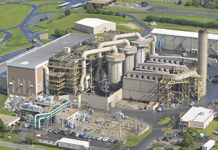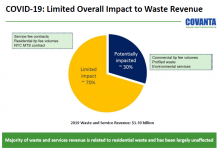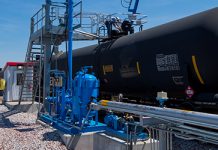Tom Konrad CFA
The US Energy Information Administration (EIA) recently published an article describing an increase in the energy content of municipal solid waste (MSW). The reason for this increase is an increase in the percentage of waste from “non-biogenic” sources (i.e. plastics) as compared to biogenic sources (paper, cardboard, wood, food and yard waste, etc.) Biogenic waste has an average heat content of 11 MMBtu/ton, as compared to 23 MMBtu/ton for non-biogenic waste.
 |
| Source: U.S. Energy Information Administration, derived from U.S. Enivoronmental Protection Agency, Municipal Solid Waste data. |
The EIA attributes the relative decrease in the amount of (biogenic) food containers and packaging (heat content 16.6 MMBtu/ton) and an increase in waste polypropylene (PP, 38 MMBtu/ton.) PP is the relatively hard-to-recycle plastic #5, found in yogurt cups and other wide-necked containers, and has a much higher heat content that relatively easy-to-recycle plastics #1 and #2 (PETE at 20.5 MMBTu/ton and HDPE at 19.5 MMBtu.)
The higher heat content of MSW should make generating electricity from MSW more efficient, and give a slight boost to margins of waste-to-energy companies like MSW electricity generators like Covanta (NYSE:CVA) and Algonquin Power and Utilities (OTC:AQUNF, TSX:AQN), which generates thermal energy from MSW in addition to a large renewable energy business.
However, if increasing energy content of waste is to make a difference in the stock prices of MSW-to-energy firms, it will have to be sustained over the long term. I doubt the trend will continue for long. First of all, total MSW volumes are flat in the US, and falling on a per-capita basis, even while recycling rates are rising (EIA data.)
I expect increased recycling to begin to reduce the energy content of the remaining waste as less-recycled, higher energy-content materials are increasingly recycled. Currently, only 13.5% of plastic containers in the waste stream are recovered, as opposed to 71% of paper and 33% of glass. Further, high-energy PP is becoming increasingly easy to recycle; I was recently pleased to find that it and LDPE (plastic #4, also with a relatively heat content of 24.1 MMBtu) are now accepted at my local transfer station.
While waste-to-energy companies may be getting a small margin boost from higher MSW heat content today, investors should not count on any such boost being permanent. That’s a large part of the reason why my preferred investments in MSW are integrated companies like Waste Management (NYSE:WM), which can profit from both increased recycling and waste-to-energy opportunities.
Disclosure: Long AQN, MW
This article was first published on the author’s Forbes.com blog, Green Stocks on September 6th.
DISCLAIMER: Past performance is not a guarantee or a reliable indicator of future results. This article contains the current opinions of the author and such opinions are subject to change without notice. This article has been distributed for informational purposes only. Forecasts, estimates, and certain information contained herein should not be considered as investment advice or a recommendation of any particular security, strategy or investment product. Information contained herein has been obtained from sources believed to be reliable, but not guaranteed.







